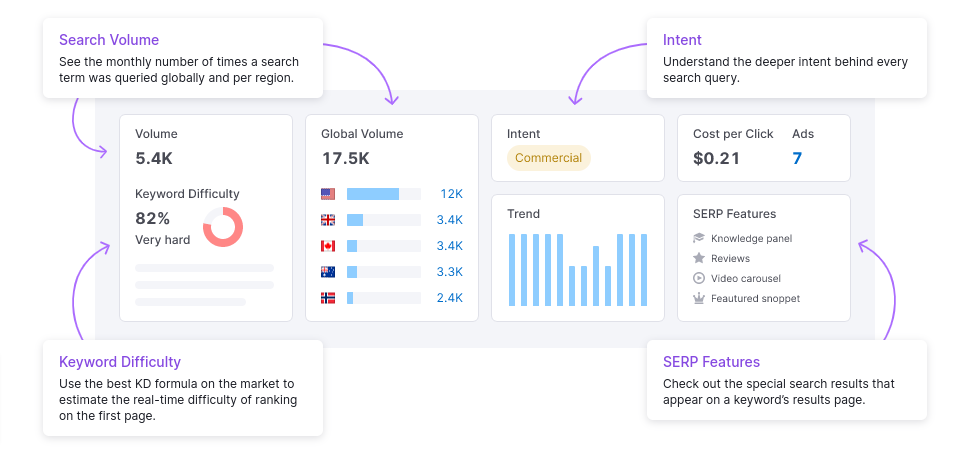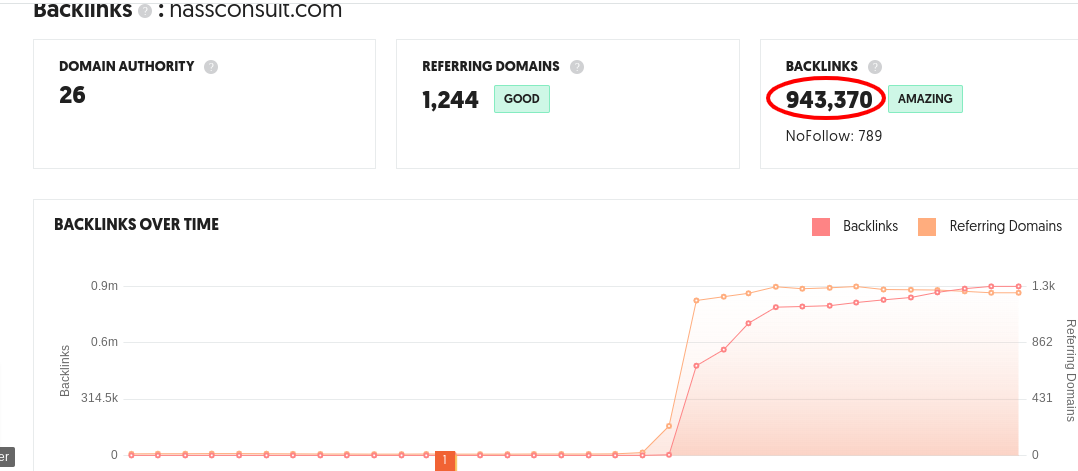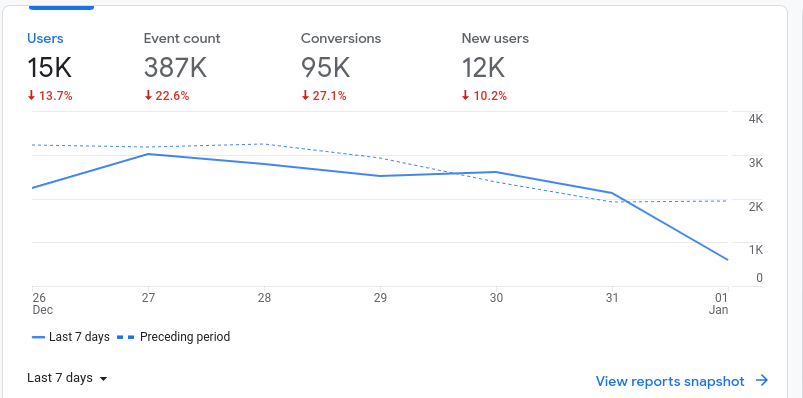Grow Your Business In 2023 With These 11 SEO Tips - In-depth Analysis

Do you want to grow your business in 2023? Search engine optimization (SEO) can help you achieve your goals. By optimizing your website and online presence for search engines, you can increase your visibility and attract more potential customers to your website.
In this blog post, we'll introduce you to 11 SEO tips that can help you grow your business this year. From technical optimization to content strategies, these tips will give you the tools you need to succeed in the highly competitive world of online business.
So if you're ready to take your business to the next level, check out our helpful SEO tips for 2023 below.
Conduct keyword research
 Keyword research is an invaluable aspect of search engine optimization (SEO) because it helps you understand what users are searching for and how they're searching for it.
Keyword research is an invaluable aspect of search engine optimization (SEO) because it helps you understand what users are searching for and how they're searching for it.
Through key phrases research, you can identify the terms and phrases that are most relevant to your business and target audience. You can then use these keywords and phrases to optimize your website and content for search engines.
Keyword research for SEO involves several steps:
-
Identify your target audience: Who are you trying to reach with your website and content? What are their interests and needs? Understanding your target audience will help you identify the keywords and phrases that are most relevant to them.
-
Create a list of potential keywords and phrases: There are several tools and resources to help you create a list of potential keywords and phrases, including Google Ads Keyword Planner, SEMrush, or Ahrefs. You can also use a tool like Answer the Public to find out what questions people are asking about your industry or topic.
-
Evaluate the competition: Once you have a list of potential keywords and phrases, it's critical to evaluate the competition for each one. You can again use a tool like Ahrefs, Ubesuggest, or SEMrush to find out how many other websites rank for that keyword and what their domain authority is. This way you can determine which keywords and phrases are most likely to rank on your website.
-
Determine the search volume and relevance of each keyword: It's not enough to simply choose the keywords with the least competition; you also need to make sure that the keywords you choose have the appropriate search volume and are relevant to your business and target audience. Use a tool like Keyword Planner to determine the search volume for each keyword and phrase, and consider using long-tail keywords that are more specific and less competitive to target specific niches within your audience.
-
Optimize your website and content for the selected keywords: Once you've identified the most relevant and appropriate keywords and phrases, it's time to optimize your website and content for those terms. This involves including keywords in your website's title tags, headings, and meta descriptions, and incorporating them naturally into your content. This way, you can improve your website's ranking in search engine results lists and attract more qualified visitors to your website.
Keyword research is an ongoing process, as the search landscape is constantly changing. It's essential to regularly review and update your keyword strategy to ensure you're targeting the most relevant and valuable keywords for your business.
Maximize Your Online Presence with Our Digital Marketing Agency
-
SEO: Unlock more SEO traffic and see real results with our expert optimization services.
-
Content marketing: Attract and retain customers with high-quality, engaging content that drives traffic and generates leads.
-
Social media marketing: Our team creates epic content that will get shared, get links, and attract traffic on social media platforms.
-
Google Ads: Effective paid strategies with clear ROI. Let our team help you get the most out of your ad spend.
-
Email marketing: Connect with your audience and drive conversions with targeted email campaigns.
-
Web design and development: A visually appealing and user-friendly website is key to attracting and retaining visitors. Our team can help you create a website that converts.
Optimize the on-page elements

On-page optimization refers to the optimization of individual web pages so that they rank better in search engines and attract more qualified visitors.
Several elements on a web page can be optimized for search engines, including:
-
Title tags: The title tag is the text that appears in your web browser tab and is also displayed as the title of a search engine result. It's critical to include your most targeted keywords in the title tag, but make sure it's concise and appropriate for the content of the page.
-
Headings: Headings or H1 tags are used to create a hierarchy of content on a page. They should be used to divide the content into sections, and they should contain relevant keywords.
-
Meta Descriptions: The meta description is a summary of the content on a page that appears in search engine results. It's helpful to include relevant keywords in the meta description as it can help attract users to your page.
-
URL structure: The URL of a page should be easy to read and contain relevant keywords. For example, a page on "How to bake a cake" should have a URL like "www.example.com/how-to-bake-a-cake" and not "www.example.com/p?id=123".
By conducting a site audit and optimizing these on-page elements, you can improve your search ranking and relevance on search engine results pages (SERPs), which can help draw more qualified traffic to your site.
It's essential to remember that on-page optimization is only one aspect of SEO and should be combined with other optimization strategies to achieve maximum results.
Related Resources
The 4 Types Of SEO You Need To Know To Boost Your Site Traffic
What is the role of SEO In Digital Marketing?
Create high-quality content
Creating high-quality content is essential for search engine optimization (SEO), as it improves the visibility and ranking of your website on search engine results pages (SERPs).
Here are some tips for creating high-quality content for SEO:
-
Use keyword research to identify the terms and phrases your target audience is searching for and include them in your content.
-
Make sure your content is informative, useful, and relevant to your target audience.
-
Use headings and subheadings to break up your content and make it easy to skim.
-
Use bullet points and numbered lists to make your content easy to read and understand.
-
Include images and videos to make your content more visually appealing and interesting.
-
Optimize your content for readability by using short paragraphs, white space, and simple language.
-
Include internal and external links to enhance your content and help search engine optimization.
-
Use meta tags, such as the title tag and meta description, to give search engines more information about your content.
Use internal linking
Internal linking refers to the practice of linking to other pages on your website within your content. This can be done by using anchor text (the clickable text in a hyperlink) to point to other pages on your website.
Internal linking is helpful for search engine optimization because it helps search engines understand the structure and hierarchy of your website. It can also help improve usability by making it easier for users to navigate your website.
Internal linking has several benefits for search engine optimization:
-
Enhanced navigation: By linking to other pages on your site, you can help users and search engines find related content and explore your site further.
-
Improved crawlability: Internal links help search engines discover and index new pages on your site. This can be especially useful for websites with a large number of pages or a deep hierarchy.
-
Increased PageRank: When a page on your site is linked to by other pages, it can pass on some of its PageRank (a measure of a page's importance used by Google's algorithm) to those pages. This can help improve the ranking of those pages in search results.
-
Keyword amplification: Using anchor text that contains relevant keywords can help amplify the topic of the page you're linking to and improve that page's ranking for those keywords.
When implementing internal links on your site, be sure to use descriptive and relevant anchor text, link to pages relevant to the content of the page you're linking from, and use a link hierarchy that reflects the structure of your site.
Acquire backlinks

Backlinks are an essential part of search engine optimization (SEO), as they help improve a website's authority and credibility in the eyes of search engines.
A backlink is a link from one website to another, and the more high-quality backlinks a website has, the more likely it's to rank well on search engine results pages (SERPs).
There are several ways to build backlinks:
-
Create valuable and informative content: One of the most effective ways to get backlinks is to create high-quality content that other users will want to link to. This can include blog posts, infographics, videos, and other types of content that add value to your audience.
-
Reach out to other websites and bloggers: If you have created valuable content, you can reach out to other websites and bloggers and ask them to link to your content. This can be done via email or by commenting on relevant blog posts.
-
Participate in industry forums and communities: Participating in industry forums and communities can help you build backlinks by providing valuable insight and discussion.
-
Collaborate with other websites or influencers in your industry to create shared content or promote each other's content. This can lead to reciprocal backlinks.
-
Leverage local mentions: Local mentions are mentions of your business on other websites, even if they don't link back to your website. These mentions can help improve your local SEO and gain backlinks from other websites.
It's imperative to know that the quality of backlinks is more significant than their quantity. It's better to have a few high-quality backlinks from reputable websites than a large number of low-quality backlinks.
It's also advisable to avoid practices that could be considered spammy or manipulative, as these can harm your SEO efforts in the long run.
Use social media
Social media can be a powerful tool to drive traffic to your website and engage with your audience. By sharing your content and interacting with users on platforms like Facebook, Twitter, and LinkedIn, you can grow your online presence and increase traffic to your website.
Here are some ways social media can impact search engine optimization:
-
Social Signals: When a page on your website is shared on social media, it can be seen as a "vote of confidence" by search engines. This can help improve the ranking of that page in search results.
-
Brand mentions: If your brand is mentioned on social media, this can improve the visibility of your website and lead to more traffic.
-
Keyword optimization: By using relevant keywords in your posts on social media, you can improve your website's ranking for those keywords.
-
Link building: By sharing links to your website on social media, you can improve the number and quality of links to your website, which can also affect your ranking in search results.
It's crucial to remember that while social media can be a useful tool for improving search engine optimization, it's only one piece of the puzzle. To achieve the most effective results, a well-rounded SEO strategy is essential.
Utilize local SEO
Local SEO is the optimization of a website to appear high in search engine results for local search queries. This is particularly critical for businesses that rely on local customers, as it can help increase visibility and drive foot traffic to the business.
Here are some tips for using local SEO:
-
Claim and optimize your Google Business profile (formerly Google My Business). This includes providing accurate and up-to-date information about your business, such as your name, address, phone number, and hours of operation.
-
Include location-specific keywords in your website content, such as the name of your city or region.
-
Use structured data markup to give search engines more information about your business and its location.
-
Encourage your customers to leave reviews on your Google Business Profile and other review websites. Positive reviews can improve your local SEO ranking.
By implementing these strategies, you can improve your local SEO and increase the visibility of your business to potential customers in your area
Use alt tags
Alt tags, also known as "alt attributes" or "alt descriptions," are used to describe the content of an image on a web page. Alt tags are helpful for search engine optimization (SEO) because they provide context for search engines and can help improve a web page's ranking in search results.
Below are some tips on how to use alt tags effectively for SEO:
-
Use descriptive, relevant alt tags that accurately describe the image's content.
-
Include relevant keywords in your alt tags, but avoid keyword stuffing.
-
Keep your alt tags short and concise, ideally less than 125 characters.
-
Use alt tags for all images, even decorative images that do not convey much information.
-
Avoid using the same alt tag for multiple images on the same page.
Make sure your website is mobile-friendly
A mobile-friendly website is pivotal for search engine optimization (SEO) because more and more users are accessing the Internet through their smartphones and tablets. In fact, Google has declared that mobile-friendliness is a ranking factor in its search results.
Here are some tips on how to make sure your website is mobile-friendly:
-
Use responsive design: A responsive website is one that adapts its layout to the screen size of the device it is being viewed on. This ensures that the website is easy to read and navigate on any device.
-
Use a mobile-friendly design: Make sure the layout and design of your website are easy to read and navigate on small screens. Avoid using small text or buttons and leave plenty of white space so the content is easy to read.
-
Optimize images and other media: Large images and videos can have long load times on a mobile device, so optimize them for the web. Compress images and use responsive design techniques to make sure they look sharp on any device.
Optimize your website's loading speed

Optimizing your website's loading speed is key to search engine optimization (SEO), as it can affect your website's user experience and rank in search engine results. A slow-loading website can lead to a high bounce rate, which is the percentage of visitors who leave the site after viewing only one page.
A high bounce rate can signal to search engines that the website is not providing a favorable user experience, which can negatively impact rankings.
Here are some tips to optimize your website's loading speed for SEO:
-
Minimize the size of your web pages by optimizing images, using compressed HTML and CSS, and reducing the number of external resources loaded.
-
Use a Content Delivery Network (CDN) to deliver your website content from servers that are geographically closer to the user.
-
Enable browser caching by adding an expiration date to static resources such as images and CSS files. This allows the browser to store these resources locally and reduces the amount of data that must be downloaded on subsequent visits.
-
Use lazy loading to delay the loading of content that is not immediately visible to the user. This can help improve the initial loading speed of your website.
-
Optimize the order in which resources are loaded on your website. For example, give priority to loading content that is above the fold before content that is below the fold.
Monitor your performance

Monitoring your SEO performance is an extremely critical part of any digital marketing strategy. There are several key metrics you can track to measure the success of your SEO efforts and identify areas for improvement.
Here are some key metrics you should consider:
-
Keyword rankings: Track your website's ranking for specific keywords in search engine results. This will help you determine how well your website is performing for those keywords and how the ranking is changing over time.
-
Traffic: Monitor the amount of traffic your website receives through search engines. This can help you understand the overall visibility of your website in search results and identify any changes in traffic over time.
-
Conversions: Track the number of conversions (sales or leads) your website generates from search engine traffic. This can help you understand the effectiveness of your SEO efforts when it comes to driving targeted traffic to your website.
-
Bounce rate: Monitor the percentage of visitors who leave your site after only one page. A high bounce rate may indicate a problem with your site's usability or that your site isn't relevant to the search queries that led to it.
To effectively monitor your SEO performance, it's imperative to use tools like Google Analytics and Google Search Console to track and analyze these metrics over time. This can help you understand the impact of your SEO efforts and identify areas for improvement.
In summary, implementing these 7 SEO tips can help your business grow in 2023 and beyond. By optimizing your website for relevant keywords, creating high-quality and valuable content, improving usability, and building backlinks, you can increase your visibility in search engine results and attract more qualified traffic to your website.
It's also key to tracking your progress and continually adjusting your SEO strategy to stay ahead of the competition. With the right approach, SEO can be a powerful tool to drive growth and success for your business.
Do you need help with your SEO campaigns? Talk to us today! We are one of the best SEO agencies in Nairobi.

Published by: Abala Tom
Date: Dec 31, 2022